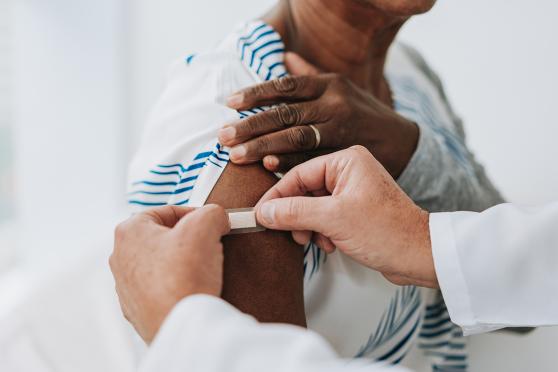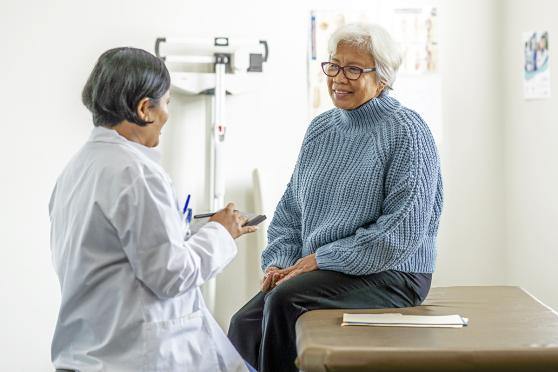What you need to know about cervical cancer
All women are at risk for cervical cancer. Regular screening tests save lives.

Cervical cancer begins in the cervix. That’s the lower, narrow part of the uterus that leads to the vagina. Precancerous changes and early cancers in the cervix often have no symptoms, making it very difficult to catch yourself. In fact, cervical cancer used to be the leading cause of cancer deaths among American women, according to the Centers for Disease Control and Prevention.
Now, nearly 93 percent of cervical cancers can be prevented with the human papilloma virus (HPV) vaccination and cervical cancer screenings that detect pre-cancerous changes when they’re easier to treat.
Here are answers to common questions about the disease, including the best ways to lower your risk.
What causes cervical cancer?
More than 90 percent of cervical cancer cases are caused by HPV, a sexually transmitted virus. HPV is very common and there are about 150 different strains of the virus. Many strains cause no symptoms, some may result in genital warts, and at least 12 can increase the risk for cancer. These “high-risk” HPV infections can take years (or decades) to become malignant. Someone infected with HPV is not only at risk for cervical cancer but also vaginal, vulvar, anal, and oral cancers. Talking with sexual partners about their sexual history may help you learn if you have been exposed.
How can I protect myself against cervical cancer?
There are several ways you can take action.
Receive regular screenings
Staying up to date with your screenings can help your doctor find and treat abnormal cells before they can turn cancerous.
- The U.S. Preventive Services Task Force (USPSTF) recommends that women ages 21 to 29 have a Pap test (also called cervical cytology) every three years.
- For women ages 30 to 65, the USPSTF now recommends a few different screening options: a Pap test every three years; a high-risk human papillomavirus (hrHPV) screening every five years; or hrHPV screening in combination with a Pap test every five years.
Don’t forget to always discuss with your doctor what kind of screenings are best for you, and when they should be performed. For more information, check out this fact sheet from the National Cancer Institute.
Get an HPV vaccine series
The vaccine protects against the major strains of HPV that cause cervical cancers.
There are three FDA-approved HPV vaccines: Gardasil, Gardasil 9, and Cervarix. The CDC recommends that preteens (girls and boys) starting at age 9 and young adults up to age 26 receive the HPV vaccine. Those up to 45 years old may also consider receiving the vaccine after talking with their doctor.
Make sure you complete your HPV vaccination series. Two doses, given 6 to 12 months apart, are recommended for children ages 11 to 12. The CDC recommends that those who start the HPV vaccine series on or after their 15th birthday, or who are immunocompromised, receive three doses.
What are the symptoms of cervical cancer?
Early cervical cancer and human papillomavirus often have no symptoms. When cervical cancer is more advanced, women may experience bleeding, vaginal discharge, bleeding during or after intercourse, or pelvic pain. But the only way to know for sure is to see your doctor.
How is cervical cancer treated?
If you’ve been diagnosed with cervical cancer, know that treatment is available, and new ways to prevent and treat cervical cancer are constantly being researched.
For early-stage cervical cancer, either surgery or radiation, in combination with chemotherapy, is the usual treatment. Surgery is an option for smaller tumors that can be removed in their entirety. Radiation with chemotherapy is the standard treatment for later-stage cervical cancer.
How else can you protect yourself from cervical cancer?
Using condoms can reduce both your risk of contracting HPV and eventually developing cervical cancer. Genital warts can still be contracted by skin-to-skin contact in areas that are not protected by the barrier, but your risk will be greatly reduced.
Quitting smoking is another step you can take. According to the American Cancer Society, women who smoke are almost twice as likely to develop cervical cancer as women who don’t.
You have the power to take charge of your health. Give yourself the gift of knowledge by scheduling your screening tests, receiving the HPV vaccine if it’s recommended, and treating your body with care.


